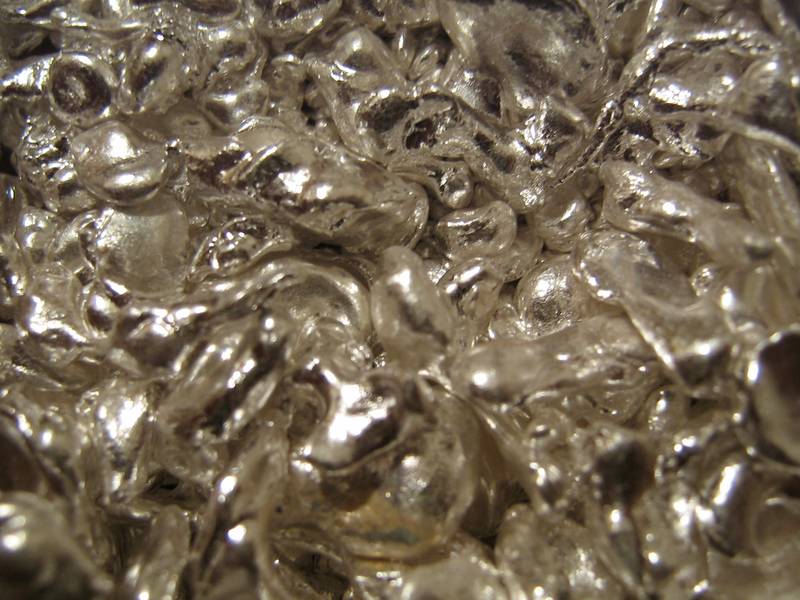Silver flakes
Silver is typically not produced as “flakes” per se, but rather as a fine powder or granules during the purification and refinement processes. The term “silver flake,” however, might be used to describe larger particles that have been intentionally created for certain applications like electronics or arts & crafts projects.
The process of creating silver flakes involves several steps:
1) Silver Refining: Silver ore is first mined and then refined through a series of chemical processes, including smelting (heating the raw material in high temperature furnaces to separate out impurities), cupellation (the process where lead oxide from silver-lead alloys was removed by heating with air or silica) and electrolysis. This results in a very pure form of silver, usually denoted as fine silver (.999).
2) Silver Powder Production: The refined silver is then converted into powders through various methods:
Mechanical Milling: Silver ingots are ground down using mills or ball-mills. This process can create a range of particle sizes, from coarse to fine powder.
Chemical Reduction Methods: In these processes, silver salts (like nitrate) dissolved in solution undergo reduction with another chemical agent like zinc dust or sodium borohydride to form pure metallic silver particles suspended in the liquid medium. The size of flakes can be controlled by adjusting reaction conditions such as temperature and concentration, pH level, etc.
3) Silver Flake Formation: To create larger “flakes,” an additional step may involve precipitation or sedimentation processes:
Precipitation: Silver ions in solution can be reduced to metallic silver by adding a suitable reducing agent under controlled conditions that favor the formation of flat, flake-like structures. This could include adjusting pH levels and temperatures during reduction reactions.
Sedimentation: After creation via precipitation or another method, larger particles tend to settle out more quickly than smaller ones due to gravity effects (settling velocity increases with particle size). Thus, by carefully controlling the sedimentation process conditions like speed and timing of addition/removal of fluids from suspension, silver flakes can be selectively harvested.
4) Washing & Drying: The resulting slurry is washed to remove any residual chemical reagents or impurities before drying the particles using techniques like spray-drying or freeze-drying (lyophilization).
5) *Classification/Sizing: Finally, classification methods such as sieving, air separation, centrifugation can be used to sort silver flakes by size for specific applications. The result is a controlled product with desired flake dimensions and purity levels suitable for industrial or artistic use cases.
